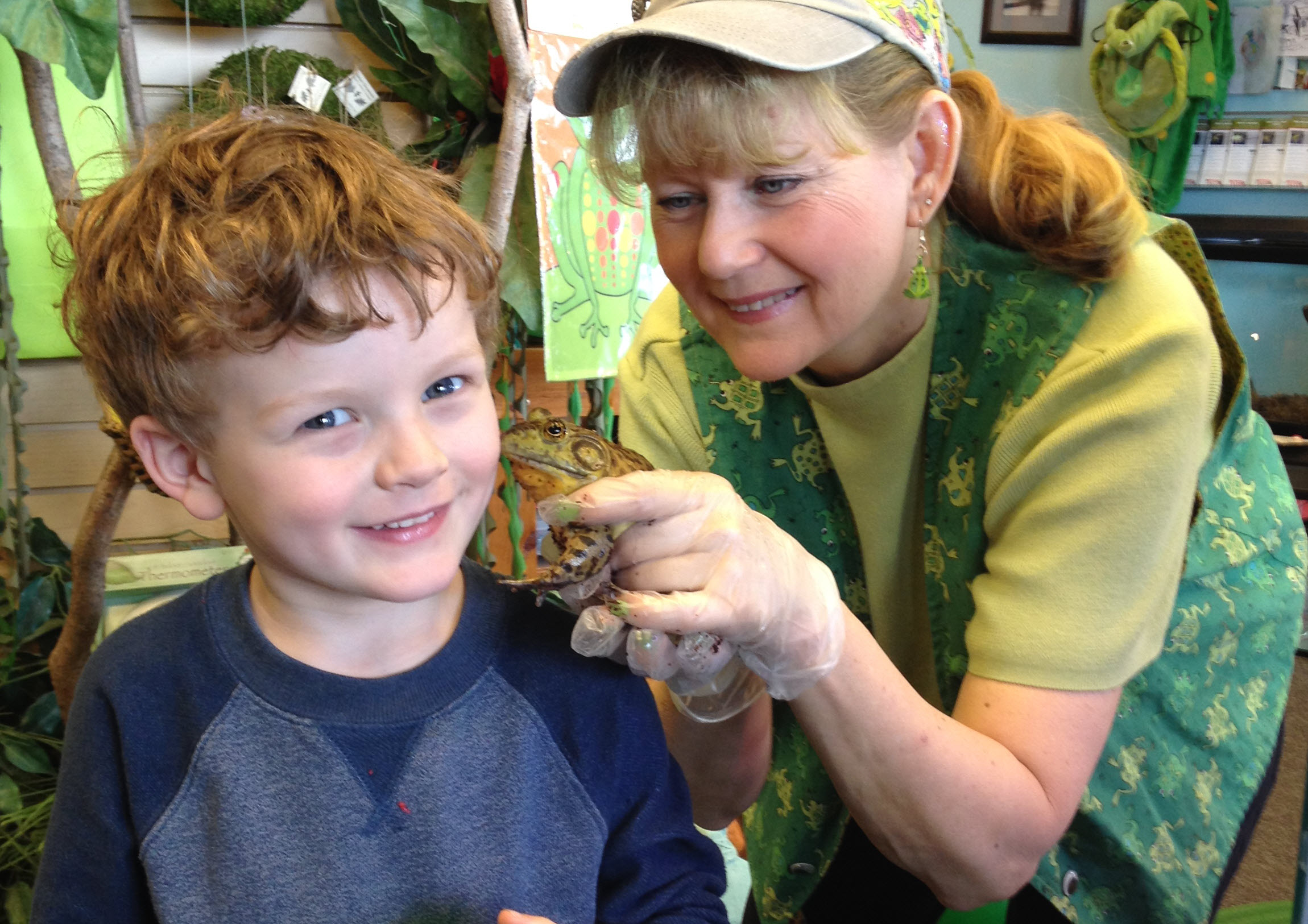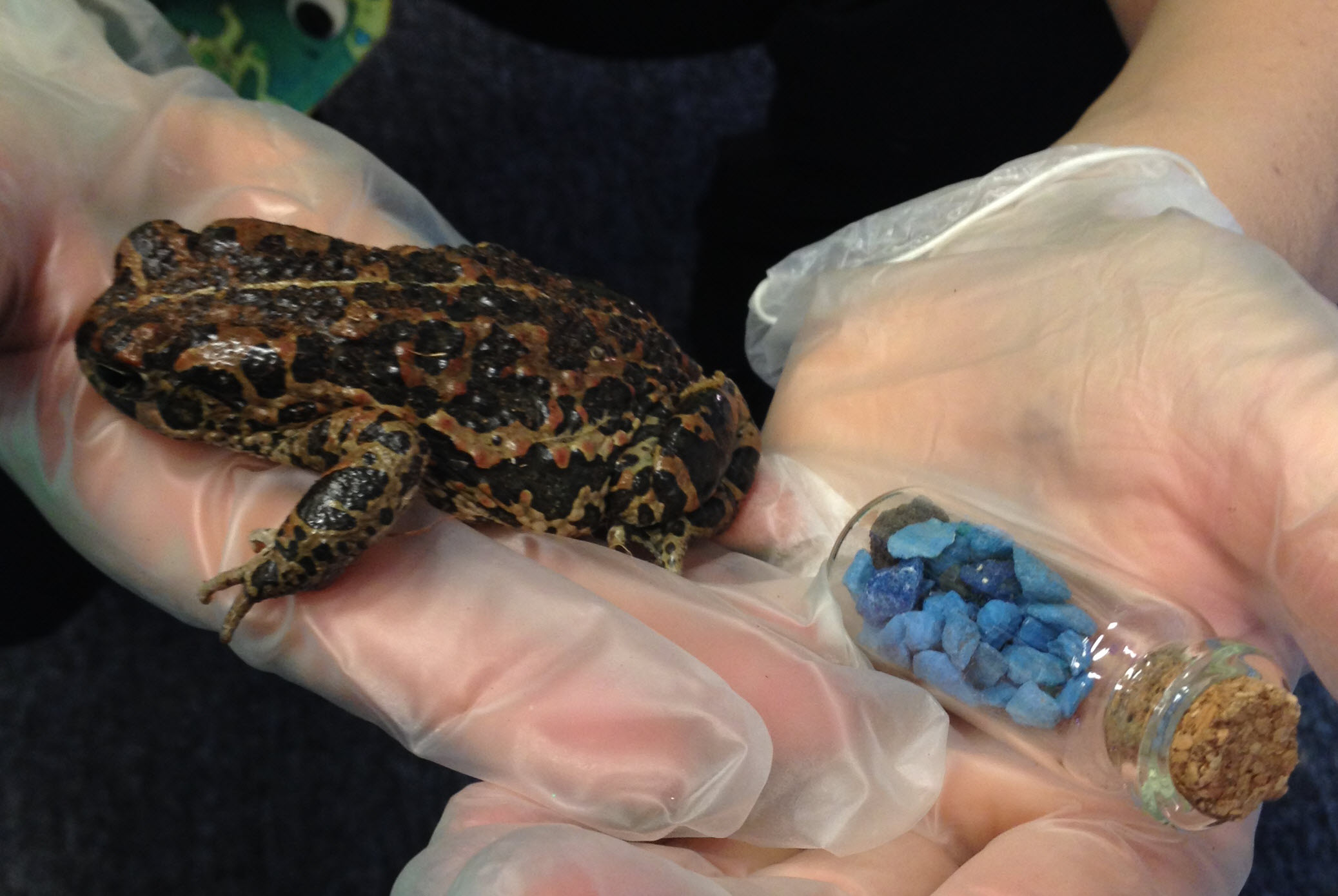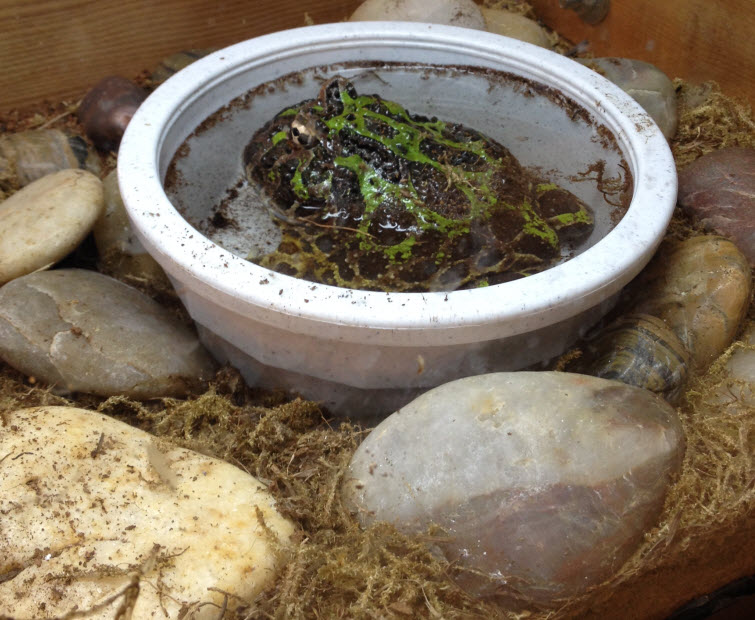
Early spring in Puget Sound summons the sounds of nature — trills and chirps, caws and buzzes. If you happen to be near water, listen for the chorus of frogs as dusk falls. Puget Sound has many waterways and wetlands where frogs can be heard and seen in their natural environment. Imagine standing on a boardwalk over a lily-pad laden pond as the sun falls, with the rise of a frog chorus all around you.
For a close-up view of frogs (and turtles) during National Frog Month (April, if you didn't know), head to the Edmonds waterfront to visit Just Frogs Toads, Too, an education center where families can see a variety of amphibians and reptiles. The animals at the center are primarily non-native (most are former pets, as the center is also a rescue); however, the resident amphibians and educational materials provide a starting point for appreciating the important role frogs play in the ecosystems just outside the shop doors.
Just Frogs, founded by Thayer Cueter, also known locally as “The Frog Lady,” began in 1998 as a frog-themed gift shop and has expanded into a nonprofit dedicated to educational outreach about frogs, their conservation and rescue of unwanted amphibian and reptile pets.
An abundance of frog-themed decor fills the small center, and during open hours (Wednesday and weekend afternoons) outside tables are set up with hands-on activities for kids.
Cueter, who was trained as a veterinary technologist and who “spent countless hours raising tadpoles into frogs” as a child at her families’ cottage in Michigan, splits her time between helming the center and traveling the region to speak at events. She answered our questions about frogs and resources for learning more about them in a recent visit.

Why do frogs matter?
Frogs are like the canary in the coal mine — as their skin is highly sensitive to pollutants, they are a bioindicator species to the health of their immediate environment. Amphibian species are declining at a rapid pace just in the last 30 years, an indicator that something is clearly wrong with the health of our environment.
Frogs are also a key piece of the food web. Frogs eat vector insect larvae (think mosquitos!), as well as other bugs. The decline and disappearance of frogs would have an adverse impact on the health of other animals on the food chain.
What are some fun frog facts?
What makes frogs distinct from other animals? Frogs’ use and/or lack of certain body parts are one of their most unusual features. For instance, frogs have teeth, and toads do not. However, frogs have no ribs. When frogs shed, they eat their skin. It aids in digestion! Some species, like the South African clawed frog, have no tongues.
Where can kids see and learn about frogs around the Sound?
Your very own backyard or visiting your local park or pond. Any park with a pond or lake is likely to support amphibians. Male frogs vocalize starting in mid-winter, which will be the first indication that there are frogs nearby. Some vocalize at night, and some, like the Pacific tree frog, you can hear in the daytime at the peak of breeding season.
Just Frogs Center is part of the FrogWatch USA program, and we can advise families on how to identify, track and report their local frogs as part of the local citizen science program aiding a global database.
For learning about local amphibians, the Burke Museum is a good resource. And we welcome all visitors interested in frogs here at Just Frogs and Friends Amphibian Center, of course!

What are good manners for visiting frog habitat?
Do not touch frogs. Enjoy looking with your eyes, and listening with your ears, and honor them by not handling them. Please leave wildlife in the wild, per Washington State law.
Do not take them in as pets but instead learn how to create a frog-friendly habitat in your own yard (see below). Do not release pet frogs into wild frog habitat. Also protect them from your other pets such as cats and dogs. Keep your cats indoors and your dogs leashed.
Hop to: Local spots to see and learn about frogs
Just Frogs and Toads Too: Located along the City of Edmonds waterfront below Arnie's

Restaurant, Thayer Cueter's center is open Wednesdays and weekends (check to find latest hours). It is handicap accessible and is close to ample parking in The Landing #1 parking lot. The shop is too small to accommodate strollers, but there is covered outdoor space to leave a stroller close by.
While on the Edmonds waterfront, also find time to visit on the pier boardwalk (no dogs or bicycles allowed on the pier portion), sandy beach, ferry views and more. At the south end, Marina Beach Park boasts a play area for kids and off-leash area for dogs.
North Seattle college greenbelt: The chorus of frogs in late winter in early spring is locally famous.
Black River riparian forest, Renton. A hidden river habitat that also hosts a great blue heron nesting colony.
Totem Lake wetland trail, Kirkland. A boardwalk trail edging a small, placid lake set among cottonwoods.
For information about creating frog-friendly habitat in your yard, visit wdfw.wa.gov.
 Four frog-tastic books for kids
Four frog-tastic books for kids
Uncover a Frog, by Aimee Bakken; ages 8+; nonfiction: This unusual, partially three-dimensional book presents an unfolding of a frog much like a dissection, along with text for each layer.
Amphibian, DK Eyewitness Books; ages 8+; nonfiction: A photo-packed book that gives an overview of the life cycle, habitat range and threats to frogs, toads and salamanders.
Green Tree Frogs, Colorful Hiders (Disappearing Acts series), by Natalie Lunis; ages 4+, nonfiction: A book about Washington's own Pacific tree frogs, which blend right into our native landscape.
Amphibians of the Pacific Northwest (multiple editors); ages 12+; nonfiction: A thorough guide to local amphibians, complete with photos depicting multiple stages of growth (not just adult stage) for identifying frogs and salamanders in the field.











